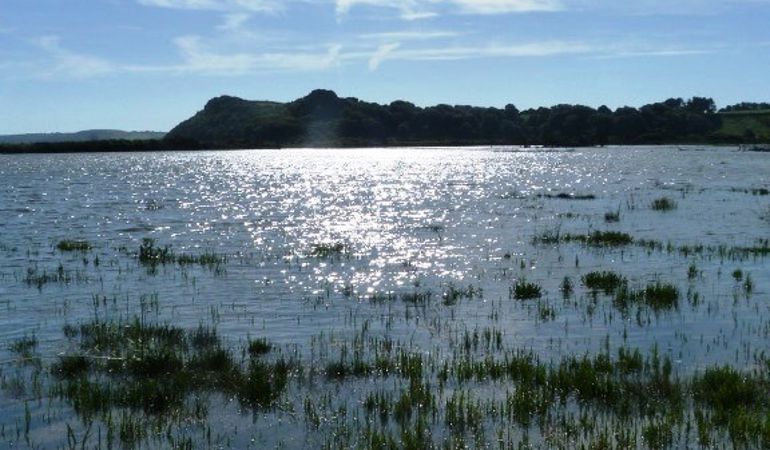NRW study confirms Wales’ seas have massive potential for carbon offsetting to tackle the climate emergency

A new study commissioned by Natural Resources Wales (NRW) has revealed the important role our seas and coasts play in offsetting carbon emissions by storing large amounts of carbon to help tackle the climate emergency.
Atmospheric carbon offsetting from woodlands and peatlands habitats are already well known. But, NRW’s new study confirms that marine habitats are important in storing “blue carbon”. According to its findings, each year, the marine environment in Wales locks away carbon amounting to the equivalent annual emissions of 64,800 cars or 115, 600 return flights from Cardiff to the Canary Islands.
It was found that marine habitats including saltmarshes and seagrass beds can place large amounts of carbon into long term storage each year and are as significant carbon stores as Welsh woodlands and forests. With the climate emergency likely to cause serious and irreversible impacts on communities in Wales and further afield, NRW’s study shows marine habitats have a big contribution to make in reducing greenhouse gases, alongside their well-recognised role in adapting to the impacts of the climate emergency.
Rhian Jardine, Head of Marine Services said;
“Our study on Blue Carbon in Wales has shown very exciting results. The potential for blue carbon to help us in the all-important task of tackling the climate emergency is very encouraging.
“We’re already working with partners to manage the health and resilience of these blue carbon habitats across Wales and we are also working on ways to further increase the carbon sink potential of the Welsh marine environment”
NRW’s study investigated a variety of blue carbon habitats in Wales, including the intertidal flats of the Menai Strait, the seagrass of Porth Dinllaen, the spindly brittle star beds off the Pembrokeshire coast and the expanses of sand and gravel covered seabed further offshore.
Topping the boards for most efficient carbon-storing marine habitats (sequestration) are saltmarshes. Present around the coastline around Wales, saltmarshes are protected in some areas such as Carmarthen Bay and Estuaries, and Pen Llyn a’r Sarnau Special Areas of Conservation. They take in carbon dioxide from the air and water and store carbon in their roots and the surrounding ground. They also help to mitigate other climate emergency impacts, through defending the coast from storms and reducing coastal flooding.
Other blue carbon stores in marine habitats are living organisms such as seagrass and shellfish, as well as in non-living forms, such as in sediment on the seabed, and in the shells of marine animals. Some carbon can be locked away for generations in the seabed miles offshore, but some, like the carbon stored in seaweed, is stored for the lifetime of the plant, before being released again back into the environment.
Increasing the potential of marine habitats to store carbon is essential as part of Wales’ efforts to combat the climate emergency. Many blue carbon habitats are already protected through Wales’ extensive marine protected area network. Management of these areas aims to increase the resilience of habitats to future change and protect and enhance quality of habitats. Some blue carbon habitats in Wales have been impacted by human activities and restoring them to good condition may increase the amount of carbon they can store.
What is clear from NRW’s study is that, in addition to carbon storage in woodlands and forests, our diverse coast and sea play an important role in carbon storage to help Wales tackle the climate emergency and protect our natural environment for future generations.
